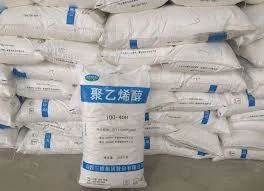The Significance of Cellulose Materials in Modern Applications
Cellulose, a biopolymer that constitutes the primary structural component of plant cell walls, is gaining increasing attention across various industries due to its unique properties and sustainability. Composed of long chains of glucose units, this natural polymer is abundant, renewable, and biodegradable, making it a prime candidate for a wide range of applications, from textiles to bioplastics.
The Significance of Cellulose Materials in Modern Applications
In the textile industry, cellulose is best known for its role in fabrics such as cotton and rayon. Cotton, a classic fiber, offers comfort, breathability, and durability, while rayon, derived from regenerated cellulose, presents a silk-like feel and excellent draping properties. The versatility of cellulose fibers allows for innovative fabric blends that cater to a variety of consumer preferences, from high fashion to everyday wear. Moreover, advancements in technology have led to the development of sustainable textile processes, such as closed-loop systems that recycle water and chemicals, further promoting the use of cellulose in fashion.
cellulose material

Another emerging application for cellulose is in the production of biodegradable plastics. Traditional plastics are notorious for their environmental impact, taking hundreds of years to decompose. In contrast, cellulose-based plastics offer a sustainable alternative that can biodegrade much faster. Commonly known as cellulose acetate, this material is already utilized in some packaging applications and single-use items, enabling companies to offer eco-friendly solutions to consumers eager to reduce plastic waste. Researchers are continually exploring new methods to enhance the properties of cellulose-based plastics, such as increasing their strength and flexibility, which could expand their applications even further.
The food industry also benefits from cellulose materials, particularly in enhancing food packaging. Cellulose-based films and coatings are being developed to protect food products from moisture, oxygen, and other external elements, prolonging shelf life while maintaining the integrity of the food. Furthermore, cellulose can be utilized as a food additive, aiding in thickening, stabilizing, and improving the texture of various food products. By incorporating cellulose, manufacturers can create healthier, more sustainable food options that appeal to health-conscious consumers.
Beyond textiles and food, cellulose’s applications extend to pharmaceuticals and cosmetics. Microcrystalline cellulose, derived from cellulose, is widely used as an excipient in tablets and capsules, providing bulk and stability to pharmaceuticals. In cosmetics, cellulose derivatives serve as thickeners and stabilizers, enhancing the performance and feel of products. The ability of cellulose to be modified chemically allows for a diverse range of formulations across various sectors.
In conclusion, cellulose materials represent a crucial element of sustainable development in numerous industries. Their renewability, biodegradability, and versatility position them as a valuable alternative to synthetic materials, meeting the growing consumer demand for environmentally friendly products. As technology and innovation continue to advance, the potential applications for cellulose will likely expand, paving the way for a more sustainable future. By embracing cellulose-based solutions, industries can contribute to reducing environmental impact while fulfilling consumer demands for high-quality products.
-
The Application and Significance of Construction RdpNewsMay.19,2025
-
Industrial Grade HpmcNewsMay.19,2025
-
Building Coating Adhesive Building Coating Adhesive HpmcNewsMay.19,2025
-
Application Of Hpmc For Detergent For Detergent In DetergentsNewsMay.19,2025
-
Application Of Hpmc Cellulose In Cement-Based MaterialsNewsMay.19,2025
-
Application Of High Quality Hpmc For Construction In The Field Of ConstructionNewsMay.19,2025




